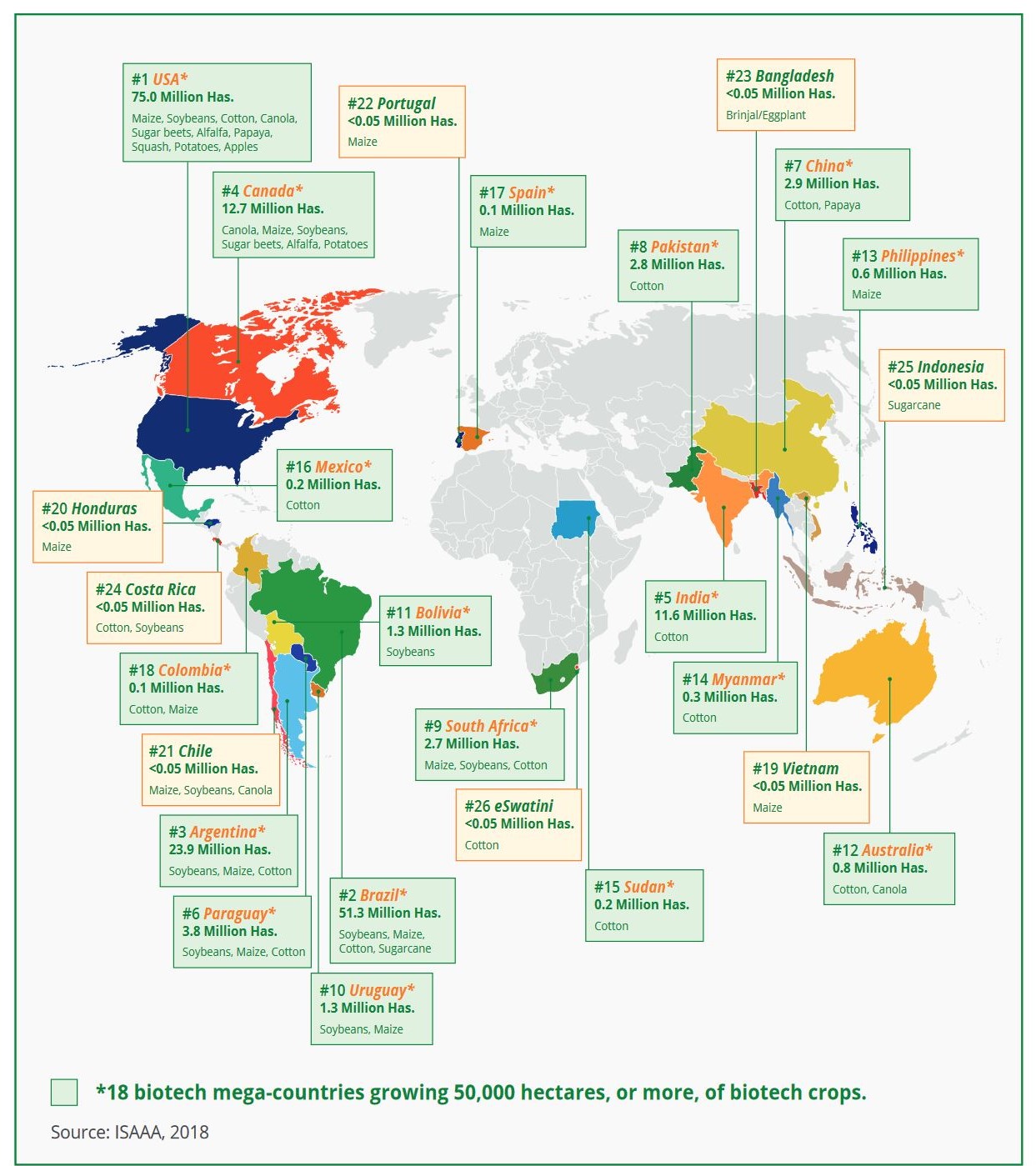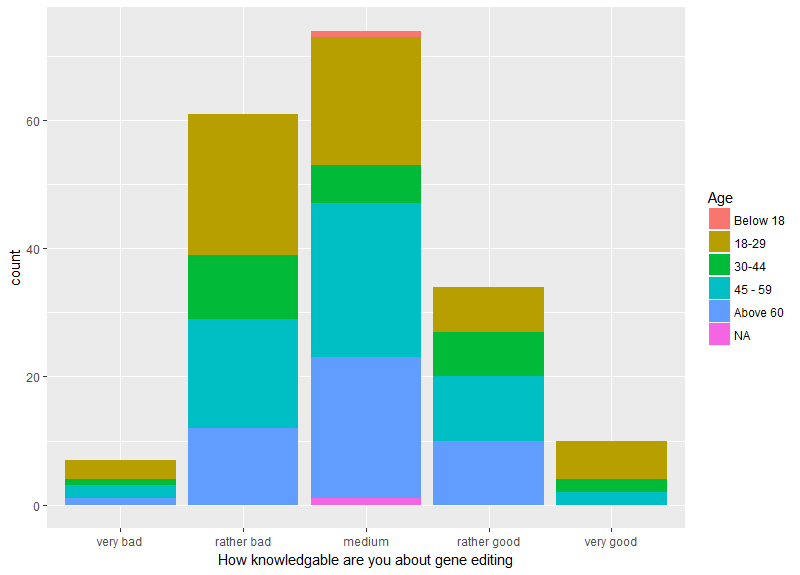|
|
| Line 157: |
Line 157: |
| | existing | | existing |
| | today in many | | today in many |
| − | variations, is believed to be the organism our ancestors selectively bred first at around 32,000 years | + | variations, is believed to be the organism our ancestors selectively bred first around 32,000 years |
| | ago <a style="padding: 0" | | ago <a style="padding: 0" |
| | href="https://www.nytimes.com/2013/05/16/science/dogs-from-fearsome-predator-to-mans-best-friend.html" target = "_blank">(Zimmer, 2013)</a>. And there are many more instances like corn which originates from a grass called teosinte | | href="https://www.nytimes.com/2013/05/16/science/dogs-from-fearsome-predator-to-mans-best-friend.html" target = "_blank">(Zimmer, 2013)</a>. And there are many more instances like corn which originates from a grass called teosinte |
| | with | | with |
| − | very few kernels <a style="padding: 0" href="https://learn.genetics.utah.edu/content/evolution/corn/">(‘Evolution of | + | very few kernels <a style="padding: 0" href="https://learn.genetics.utah.edu/content/evolution/corn/" target = "_blank">(‘Evolution of |
| | Corn’, | | Corn’, |
| | n.d.)</a>. However, this process is not considered GMO technology today. What we understand under | | n.d.)</a>. However, this process is not considered GMO technology today. What we understand under |
| | genetic | | genetic |
| | modification today can be traced back to | | modification today can be traced back to |
| − | the mid 1900´s | + | the mid 1900´s, |
| | when scientists discovered that genetic material can be transferred between different species | | when scientists discovered that genetic material can be transferred between different species |
| − | <a style="padding: 0" href="https://doi.org/10.1084/jem.79.2.137">(Avery, MacLeod, & McCarty, 1944)</a>, | + | <a style="padding: 0" href="https://doi.org/10.1084/jem.79.2.137" target = "_blank">(Avery, MacLeod, & McCarty, 1944)</a>, |
| | the structure of genetic material was identified as a double helix <a style="padding: 0" | | the structure of genetic material was identified as a double helix <a style="padding: 0" |
| − | href="https://doi.org/10.1098/rspa.1954.0101">(Crick, Watson, & Bragg, 1954)</a>, the genetic code was | + | href="https://doi.org/10.1098/rspa.1954.0101" target = "_blank">(Crick, Watson, & Bragg, 1954)</a>, the genetic code was |
| − | deciphered <a style="padding: 0" href="https://www.ncbi.nlm.nih.gov/pubmed/13938750">(Nirenberg, Matthaei, | + | deciphered <a style="padding: 0" href="https://www.ncbi.nlm.nih.gov/pubmed/13938750" target = "_blank">(Nirenberg, Matthaei, |
| | Jones, Martin, & | | Jones, Martin, & |
| | Barondes, 1963)</a> and finally a DNA recombinant technology was described <a style="padding: 0" | | Barondes, 1963)</a> and finally a DNA recombinant technology was described <a style="padding: 0" |
| − | href="https://doi.org/10.1073/pnas.70.11.3240">(Cohen, Chang, Boyer, & Helling, 1973)</a>. Only a few | + | href="https://doi.org/10.1073/pnas.70.11.3240" target = "_blank">(Cohen, Chang, Boyer, & Helling, 1973)</a>. Only a few |
| | decades after these | | decades after these |
| | ground-breaking discoveries were made, the first | | ground-breaking discoveries were made, the first |
| | genetically modified (GM) plants were produced in 1983, which were antibiotic resistant tobacco and | | genetically modified (GM) plants were produced in 1983, which were antibiotic resistant tobacco and |
| | petunia | | petunia |
| − | <a style="padding: 0" href="https://www.ncbi.nlm.nih.gov/pubmed/7153688">(Bevan & Chilton, 1982; Fraley, | + | <a style="padding: 0" href="https://www.ncbi.nlm.nih.gov/pubmed/7153688" target = "_blank">(Bevan & Chilton, 1982; Fraley, |
| | 1983; Herrera‐Estrella | | 1983; Herrera‐Estrella |
| | et al., 1983)</a>. | | et al., 1983)</a>. |
| − | Soon, the first GM plants were commercialized: in the | + | Soon, the first GM plants were commercialized: In the |
| | early 1990´s China approved modified tobacco and in 1994 the United States Food and Drug Administration | | early 1990´s China approved modified tobacco and in 1994 the United States Food and Drug Administration |
| | (U.S. | | (U.S. |
| | FDA) approved | | FDA) approved |
| − | the “FLAVR SAVR” tomato which was modified to have a longer shelf live by delaying ripening. Today | + | the “FLAVR SAVR” tomato which was modified to have a longer shelf live by delaying ripening. Today, |
| | numerous | | numerous |
| | GM | | GM |
| Line 193: |
Line 193: |
| | sugar beet, | | sugar beet, |
| | vegetables like tomato, maize and potato and even cotton for clothes production | | vegetables like tomato, maize and potato and even cotton for clothes production |
| − | <a style="padding: 0" href="http://www.isaaa.org/gmapprovaldatabase/cropslist/default.asp">(‘GM Crops | + | <a style="padding: 0" href="http://www.isaaa.org/gmapprovaldatabase/cropslist/default.asp" target = "_blank">(‘GM Crops |
| | List—GM Approval | | List—GM Approval |
| | Database | ISAAA.org’, n.d.)</a>.</p> | | Database | ISAAA.org’, n.d.)</a>.</p> |
| Line 269: |
Line 269: |
| | </figure> | | </figure> |
| | <p style="text-align: justify; margin-bottom: 1em;"> | | <p style="text-align: justify; margin-bottom: 1em;"> |
| − | <b><i>Germany</i></b><br> | + | <i>Germany</i><br> |
| | In Germany, there is no more GM crop farming since 2012. GM maize has been planted last in 2008 | | In Germany, there is no more GM crop farming since 2012. GM maize has been planted last in 2008 |
| | (3.171 hectares, 0.15% of total maize area in Germany) and GM potatoes have been planted last in 2011 | | (3.171 hectares, 0.15% of total maize area in Germany) and GM potatoes have been planted last in 2011 |


















